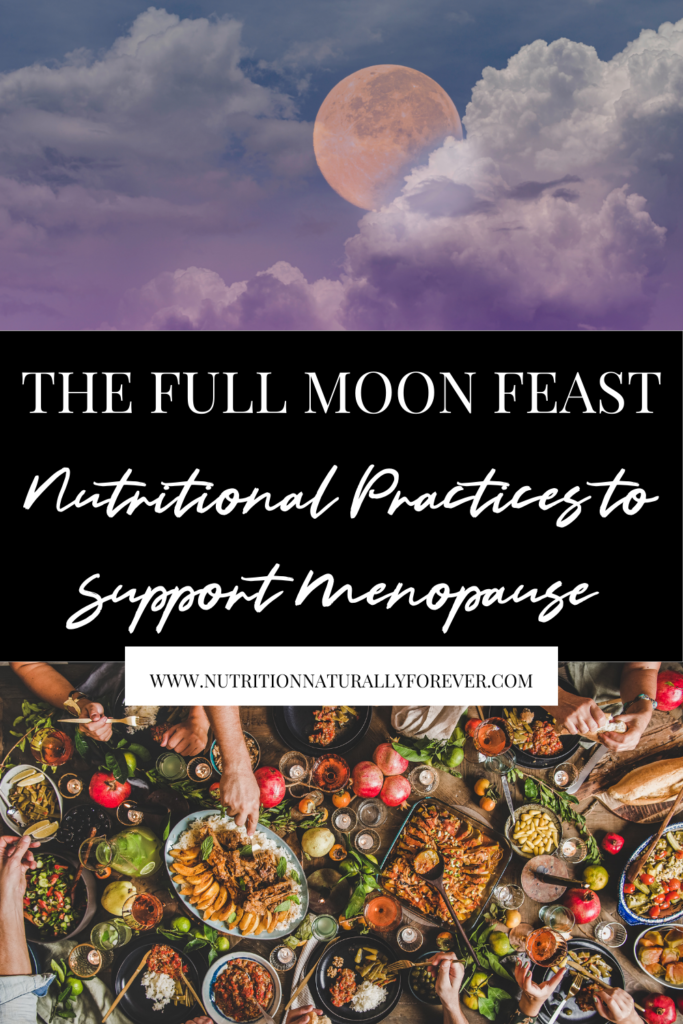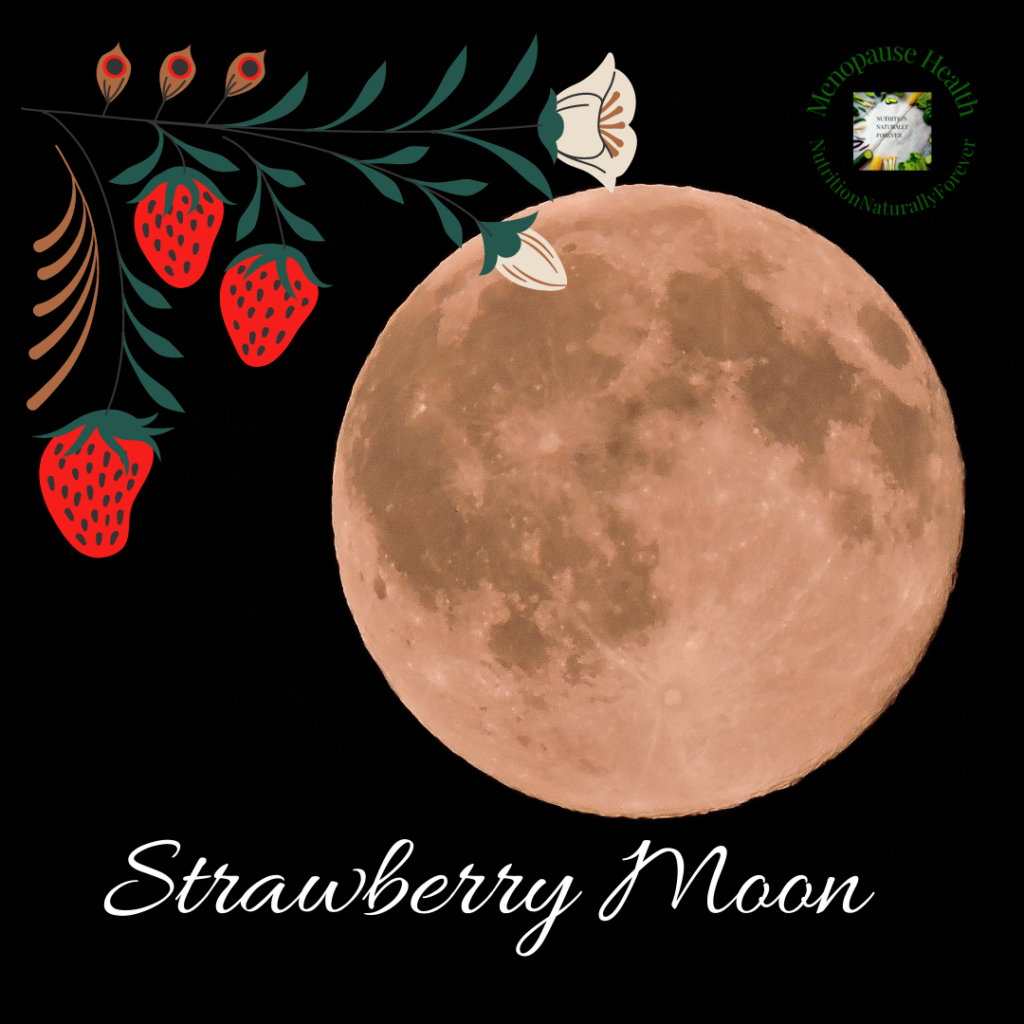
The Full Moon Feast: Nutritional Practices to Support Menopause.
The full moon in June for me is the height of summer energy.
Maybe it’s because I am a Gemini baby and love the sunshine, summer to me means freedom.
Freedom from stiff clothing and shoes, I am a secret Hobbit!
Freedom from the short dark days of winter, it feels like there is additional time and opportunity, maybe it’s just me, maybe it’s the collective energy, can you feel it?
If you have been following the feast cycle, this week we hit the peak.
If you missed previous posts you can catch up here with the New Moon Feast and the Quarter Moon Feast.
Read on to discover the foods and rituals you can incorporate during the height of the moon cycle to support optimal health and well-being during menopause.
The Full Moon Phase
Here is a recap of the phases of the moon and how they closely relate to the seasons and the female cycle;
- New Moon – First day of bleeding – Winter
- First Quarter Moon – Follicular phase – Spring
- Full Moon – Ovulation – Summer
- Last Quarter Moon – Luteal phase – Autumn
So this week we are nourishing our bodies according to the ovulation phase.
This is the moment your body has been preparing for since you started your bleeding or welcomed the new moon.
What comes to mind when you think of ovulation?
For me, it was always about becoming pregnant or rather preventing it mostly and this is where we do our body a disservice by focusing our whole cycle on preventing this event (unless of course, you are trying to get pregnant, in this post, we are not).
I was never taught how important ovulation is in order to support optimal hormonal health. Hormone focus tends to be centred on estrogen but progesterone plays a massive part in hormone balance, we’ll discover more about this in next week’s blog, sign up to my email list to make sure you don’t miss it.
Back to summer and ovulation for now though. The summer phase of the cycle is about taking action.
What were your new moon intentions? What plans have you made to make these intentions a reality? Now it’s time to take action.
Harness your inner Mother, Healer, and Nurturer.
Do you feel energetic, confident, and sexy? This glow is due to a spike in testosterone.
If you are ovulating, this phase lasts for 3-5 days. Once an egg is released it will survive for just 12-24 hours. On average we have just 6 days within 28 where we can actually become pregnant.
This fertile window makes you fertile in mind and relationships as well as the body. You will become a social butterfly and feel invincible.
Embrace whatever your body and mind are telling you to do, just go with it, and find joy.
Full Moon Rituals
Connecting to the world around you is an important part of connecting to your own body.
Whereas at the New Moon, we reflect and set intentions, with the full moon we celebrate and release.
Celebrate achievements and practice gratitude for everything you have and release anything that is no longer serving you whether that is habits, or goals that no longer align with your lifestyle or relationships.
Every full moon has a different name based on the seasonal observations of Native Americans.
June is the Strawberry Moon typically named due to the wild strawberries ready to harvest at this time of year. Another name for this moon is the Rose Moon which indicates love is in the air, for yourself as well as others.
Take some time to reflect on your relationships with yourself and others, how can you build on these and create more love?

The Full Moon Feast
Continuing to focus on liver health will support the body to process excess estrogen to protect against PMS following ovulation.
You may find you crave light ‘summer’ foods during this phase, this is because your body wants plenty of anti-oxidant-rich foods providing your A, C and E vitamins.
Focus on eating fresh and local fruits and vegetables (in the summer phase during the winter months using frozen berries is an ideal way to consume these nutrients along with nourishing soups).
Prepare salads and smoothies. Include lightly steamed or stir-fried cruciferous vegetables such as broccoli, cabbage, cauliflower, kale, bok choy, spring greens and Brussels sprouts.
These will all support the liver’s detoxification process as well as support the gut with plenty of fibre, see last week’s post for more info on gut health.
An important micronutrient for this phase of the cycle is Glutathione.
Glutathione is a protein made up of cysteine, glutamine, and glycine and is an important antioxidant. Every cell in your body uses it to support the elimination of toxins, protect against free radical damage and contribute to an effective immune system.
You can take this nutrient as a supplement to support liver detoxification. Alternatively, by including the following foods in your diet, you can increase your levels naturally;
- Cruciferous veggies – broccoli, cabbage, cauliflower, kale, bok choy, spring greens and Brussels sprouts.
- Vitamin C – eat the rainbow of fruits and veggies, especially dark leafy greens and berries.
- Spinach, okra, asparagus and avocados contain naturally occurring Glutathione.
Selenium is an antioxidant that is necessary for the production of glutathione which can be found in Brazil nuts, seafood, chicken, beef, pork and brown rice.
It is important to remember that how food is processed, stored and cooked will have a direct effect on the nutritional content of the food you eat as well as the combinations.
Variety is the spice of life!
Hormone Harmony Support
Discover how to naturally create hormone harmony by nourishing your body in alignment with your menstrual cycle or the moon’s phases.
Explore a holistic approach that aligns your nutrition with your unique menopause journey.
Moonlight Menopause: Align Your Nutrition with Natural Rhythms

Discover the Wild Well-Being Membership – reconnect with your body and thrive through menopause with holistic health, moon cycle alignment, and personalised astrology awaiting you inside.
